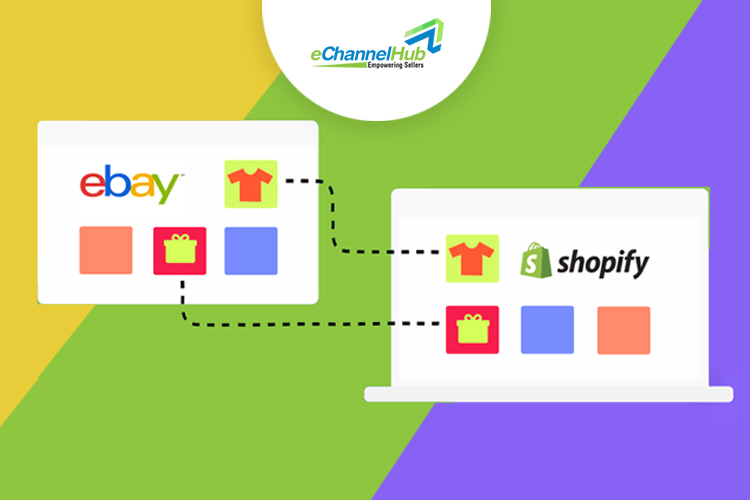How to Sell on eBay using Shopify – eChannelHub Integration

In October of 2017, eBay and Shopify collaborated in what was touted to be an almost revolutionary move. Thismultichannel e-commerce platform was created to help give access to the merchantsbased in the U.S. and Canadaselling in USD or CAD, allowing them to enlist and sell their products straight from their Shopify accounts with the help of multichannel listing tools and a multichannel listing software, making the fulfillment and inventory process on Shopify much easier for them. The multichannel listing option on eBay just became more lucrative with this new sales channel, since it aids the merchants in effortlessly syncing inventory information including product titles and descriptions, and price and quantity directly from Shopify to eBay in real time. Therefore, they no longer require to manually enter it. Also, the orders placed on eBay are imported to Shopify, giving the merchants one solid place to process orders from both the platforms. Additionally, Shopify also reflects any messages from the buyers at eBay.
How Does it Work?
The process is extremely simple. Once you add new products to Shopify, you can create an eBay listing by syncing the product information in the eBay sales channel. There are several listing tools for marketplaces with the help of which your entire product catalog will be managed on one single platform, be it for your online store, retail store, eBay listing, and all other sales channels. Your available inventory, too, will be synced by Shopify with every active sales channel, thereby stopping you from selling your last product to two customers. You will be provided reports and snapshots that will help you understand your total revenue, aiding you in keeping track of your top performing SKUs and shipping costs that include orders from eBay.Using the eBay channel will also let you set unique prices for your eBay listings, fulfill your eBay orders directly from Shopify with order management tools, communicate with your customers using built-in eBay messaging, manage your inventory and orders using real-time inventory sync tools and a software for inventory management, manage your eBay business policies from inside Shopify, and use Shopify reports to easily reconcile revenue from eBay sales.
The Cost
Apart from a Stores account, you’re not required to pay any additional Shopify fees to sell on eBay. The monthly subscriptions vary, ranging from $24.95 to $349.95 a month. However, a limited period offer for three free months of eBay Premium worth$225 is provided by the marketplace to Shopify users. If you’re not sure about which Stores subscription is best suited for your business, eBay has got you covered. According to it, Basic is the one to go for if you’re listing at least 250 items a month, Premium if you have at least 1,000 items, and those listing 10,000 items and more should opt for Anchor. The rest is managed by the multichannel product listing software and the multichannel product selling software. Whereas a percentage of net revenue you make on every sale through eBay is taken by Shopify, the former charges a final value fee on each transaction.
Conclusion
By using the multichannel inventory control software and getting access to eBay’s massive presence, the merchants will be exposed to 170 million active buyers worldwide, and also get to expand their brand’s footprint on eBay’s marketplace. Satish Kanwar, Shopify’s VP of Product, said, “The eBay channel has the potential to introduce our merchants to eBay’s millions of buyers, exposing merchants to a massive number of new sales opportunities.” We’ll have to see how this merger turns out in the near future.
Write For Us
Gain multichannel inventory visibility and control with eChannelHub
Learn more about eChannelHub with a free demo, tailored for your unique retail business.
Request A DemoRequest a Demo
Gain multichannel inventory visibility and control with eChannelHub
Learn more about eChannelHub with a free demo, tailored for your unique online business




